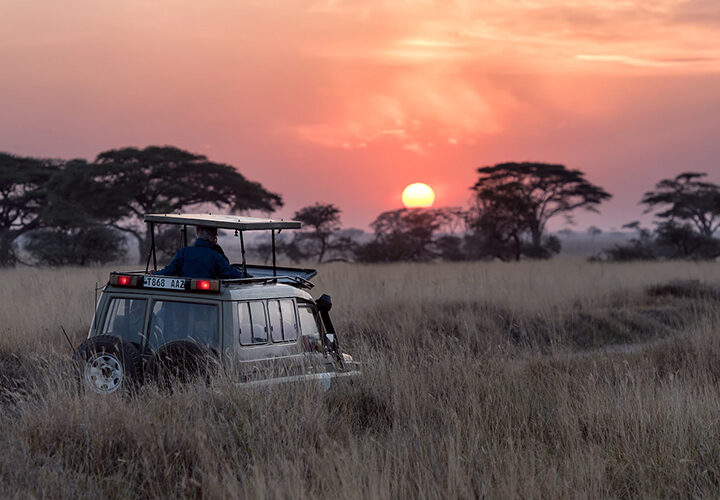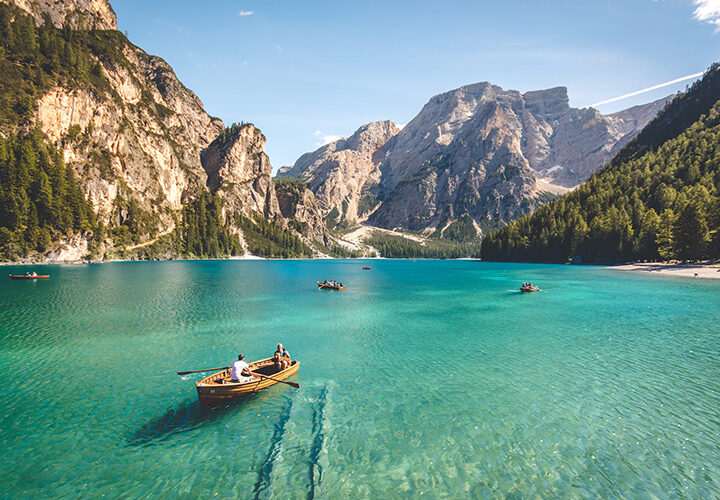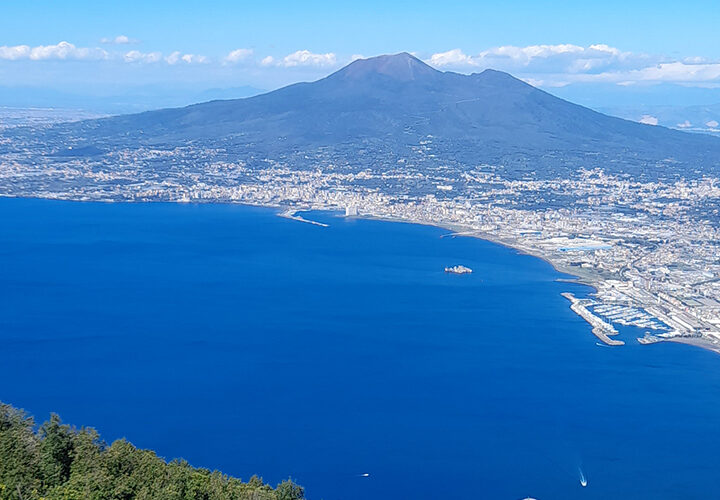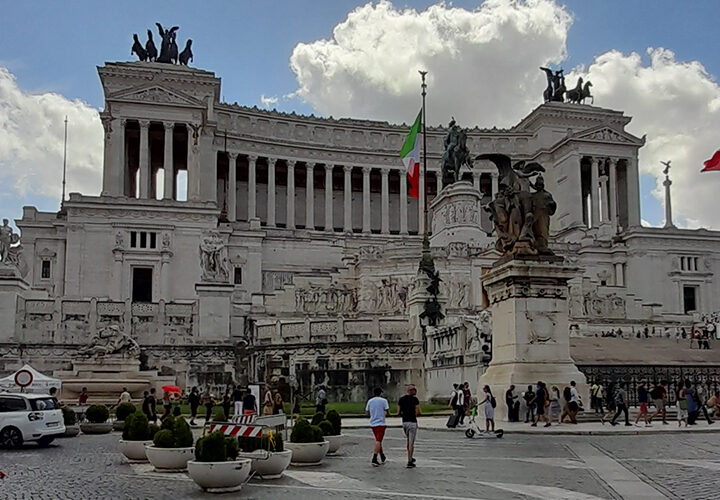Exploring Italy part one: The Floating City
Last year, the summer of 2022, seemed to be the first time since Covid that travel was easy and accessible without regulations. Having just completed my first year of university, my partner and I decided to make the most of this new freedom and explore Italy. But instead of a city break, like I explored last time with Amsterdam, we decided to do more of a road trip around Italy. However, instead of using cars, we used entirely public transport to get between the four main locations we visited. These stops on the journey were: Venice, San Marino, Rome, and The Amalfi Coast, which is near Naples. In this blog, I’ll explore these places, how easy it is to travel around them and between them, what there is to do there, and what you should consider both before leaving, and when visiting. In this first part, I’ll focus on Venice and San Marino, and the following part will look at Rome and the Amalfi coast.
Why this trip?
Although Italy is one of the most popular tourist destinations at the moment, why did we choose these places above other popular Italian places? In my experience, Italy is one of the most diverse countries and cultures in Europe, and we believed that this trip would help us sample as much of this diversity as we could on our budget. If you’re on a higher budget, you might want to consider looking at some of the other attractions in these regions or even travelling somewhere else entirely; I don’t pretend for a moment that this is an exhaustive list of what Italy has to offer. And if you’re on a smaller budget, why not read and pick one or two of the locations/attractions and plan something friendly to your budget? Italy is an incredibly diverse country with so much to offer, so use this to get some ideas of what’s there.
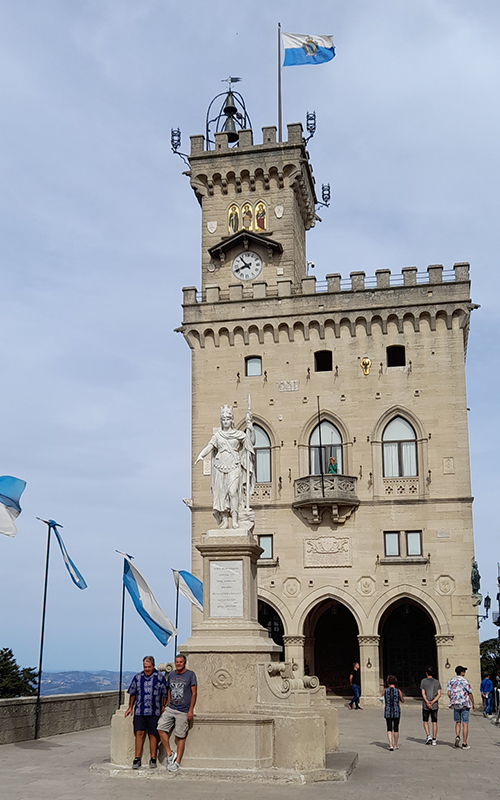
Italy has very good connections to the UK, with flights from virtually every international airport in the UK leaving for Italy every day. You can visit Italy visa free for up to 90 days as a tourist. The following only describes entry to Venice and San Marino; however if you want your holiday in Italy to start elsewhere there are countless other Italian airports.
Venice
- By plane – The way we started this holiday was by flying in to Treviso Airport. This is 19 miles from the city centre, and has buses that go to Mestre train station. From here you can catch a train or tram into Venice city in under 10 minutes. There is also Marco Polo Airport, located 8 miles outside the city centre. Although more convenient, it is smaller and has fewer flights going there, especially from cheaper airlines.
- By train – You can travel from London to Venice by train, however it is a long and costly journey, so I would recommend flying if possible. Get the Eurostar from London to Paris, change trains and get the train from Paris to Milan, then get the train from Milan to Venice.
- By car – Travel to Venice by car is, again, possible but long and I would only recommend if you really like road trips. Drive to Dover and get the car ferry/ Eurostar to Paris (or whichever destination suits you best) then drive to Venice. Note that if you wish to drive around Italy, but don’t want the long drive to Italy, cars can be hired in Mestre once you get here
San Marino
- By plane – The country of San Marino has no airports, so I recommend flying into Rimini Federico Fellini Airport in Italy, getting a shuttle bus to Rimini Station, then getting the bus to San Marino from here. You can also fly into Bologna, which has good public transport connections to San Marino via Rimini.
- By train – There is a train from Venice which stops at Rimini station. From here get the bus to San Marino.
- By car – As above, but drive to San Marino, most likely via Rimini as the roads are easier.
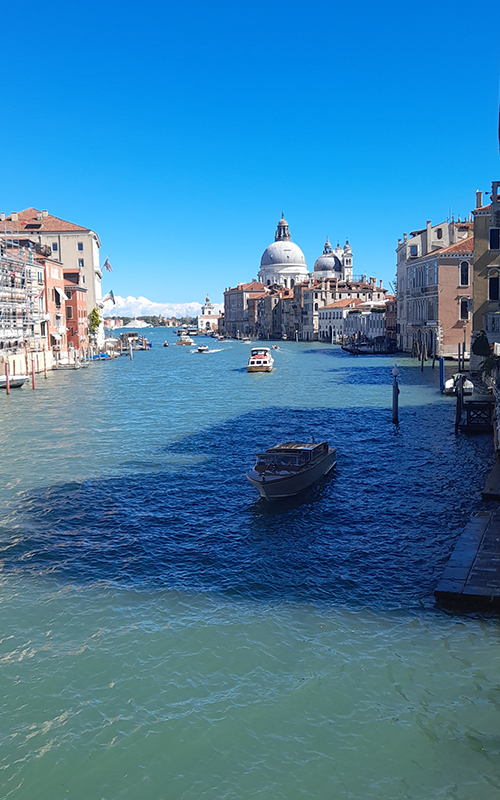
Stop one: Venice
The first stop on the 11-day holiday was Venice. A city famous for its canals, stunning architecture and rich culture, Venice is one of the most popular tourist attractions in Europe. With over 5 and a half million people visiting every year, Venice is easily one of Europe’s top attractions. Unlike many of the other cities that draw the big crowds, such as Paris, Istanbul, London or Amsterdam, Venice isn’t a capital city, nor is it a particularly large city. With only around 15 square miles of land area above the lagoon, Venice isn’t a huge city, but it makes up for its small size with beautiful architecture and fascinating attractions. Venice’s charm is exactly this; it isn’t a big city, it isn’t full of traffic, it’s a more relaxed way of life. However, due to the tourist popularity of the city, it can still get very busy with tourists, especially during peak times such as the summer holidays.
Once we arrived in Venice Treviso Airport, we caught the shuttle bus to Mestre station. Mestre is the section of Venice that is on the mainland, and is significantly more modern and built up than the floating city in the lagoon. Mestre is a great option if, like us, you’re travelling on a budget. We stayed in a hotel in Mestre, and this hotel was proportionally the cheapest of the holiday. From Mestre train station you can get a train which stops in Venice, or there are trams to Venice all over Mestre. We were able to get a tram on the street outside our hotel, which took us into Venice for a very small fee in about 10 minutes. There are a wide range of hotels within the city of Venice itself, however they are often double or triple the price of staying in Mestre and getting the tram or train in, so I would really recommend Mestre for budget travellers.
Know-before-you- go: Venice, Italy and San Marino.
Language: Italian.
Currency: Euro.
Emergency number: 112 or 113.
Nearest embassy: Rome, or the consulate in Milan.
Top tips:
- There are no cars in Venice. Although there is a car park and rail/tram station at the end of the bridge that connects Venice to the mainland, you cannot use your car anywhere in the actual city itself beyond here.
- Venice can get very busy during the tourist seasons (July-September) I’d recommend going March- June or September- October to avoid the crowds. Furthermore, this means you can make the most of the warm weather without the unbearable heat of midsummer.
- Pickpocketing can be rife in the busier areas of Venice. Check our guidance on personal safety.
- Be prepared for a lot of walking in both places. Bring comfortable shoes and a map, especially for Venice which has many complex streets.
- San Marino is an independent country, so treat it as such! It may be considered rude to refer to it as part of Italy, or to suggest it doesn’t need to be independent- although relationships with Italy are good, Sammarinese people are proud of their independence
Once you’ve arrived in the city of Venice, there is loads to see and do. Here is my list of the top ten things to do:
- Have a gondola ride. The gondolas are flat bottomed, traditional Venetian rowing boats. They’re navigated by skilled Gondoliers, who are extensively trained and require a license to operate. As well as being an iconic symbol of Venice, these boats can take you on tours of the canals, and you can see the beautiful architecture of the beautiful winding side streets from the many canals, often while your Gondolier tells you about the history of the buildings.
- Visit San Marco’s Square and the basilica. One of the most iconic squares in the world, this stunning square is home to San Marco’s Basilica, one of the finest examples of Byzantine architecture. There are also a range of lovely cafés and restaurants here.
- Visit Doge’s Palace and the Bridge of Sighs. Doge’s Palace is a magnificent palace that once served as the seat of government in Venice. During the height of the Venetian Empire, much of the Mediterranean was controlled from here, including Northern Italy, Dalmatia (part of modern-day Croatia), Crete (part of modern-day Greece), and Cyprus to name a few. The Bridge of Sighs is the ancient bridge that connects the palace to the prisons next door.
- Visit the Rialto Bridge and market. One of the most iconic bridges in Europe, the Rialto Bridge looks stunning over the Grand Canal. There are also market stalls along the bridge, which offer unique gifts and cuisine.
- The Peggy Guggenheim collection. Visit one of the most exciting collections of modern art in Europe, with works from artists such as Picasso, Pollock and Dali. With beautiful gardens and its location of the grand canal, it’s one of the most beautiful and serene locations to enjoy art in Europe.
- Explore other Venetian Islands. Most of Venice is walkable once you’re in the city, thanks to the myriad of bridges that connect the islands together. However, some islands are further away and require a short boat ride, such as Murano Island, famous for its glass making. These islands often offer something a bit different to the rest of Venice, so it’s definitely worth giving them a go.
- Climb the Campanile di San Marco. Ascend the Campanile di San Marco, the bell tower in St. Mark’s Square, for breathtaking panoramic views of Venice. It offers a magnificent vantage point to observe the city’s unique architecture and picturesque canals
- Visit one of Venice’s many churches. These are all unique, and offer an insight into the religious culture of the city.
- Gallerie dell’Accademia. Located in the heart of Venice, this stunning gallery is home to countless pieces of Venetian art that capture the beauty of the city in it’s former trading glory.
- Enjoy walking around. My favourite thing to do in Venice was just to enjoy being there! Walk the beautiful and picturesque streets, and enjoy the beautiful architecture and canals. Venice is made up of various neighborhoods or “sestieri,” each with its own distinct character. Get lost in the narrow streets of Cannaregio, explore the artisan shops in Dorsoduro, or discover the quiet charm of Castello, all while taking in the beautiful scenery and discovering hidden gems.
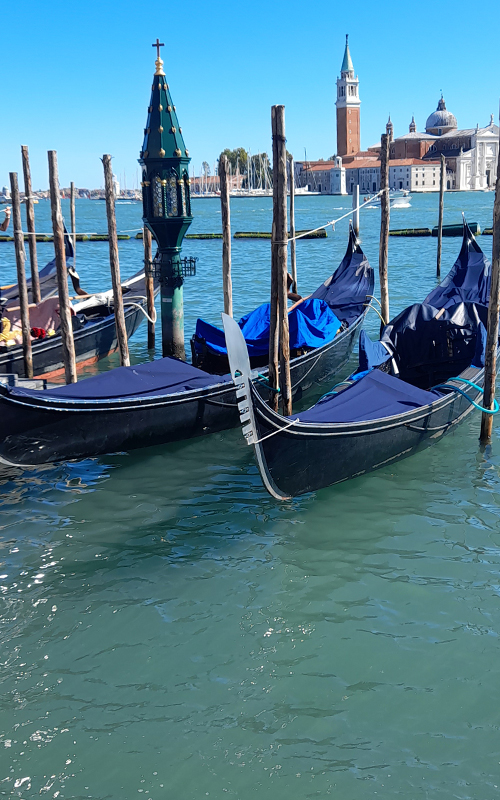
Things to keep in mind when in Venice.
Venice is, overall, a very safe location and most visits here and trouble free. However, as with anywhere, there are considerations that must be made before travelling here. Here are a few:
- Pickpocketing- Venice is a popular place for pickpockets, especially busy places like San Marco square, or train stations. Since Venice is usually very busy, I would recommend being on high alert at all times for pick pocketers, especially in these busy places. Remember to keep all valuables out of sight and in a zip bag if possible, and don’t leave your phone or bag unobserved for any amount of time, even just to take a picture.
- Scams- Venice, like many popular Italian cities, plays hosts to a wide range of scams. These can involve people giving you things (such as flowers, or a bracelet) seemingly for free, then asking for money from them. They can also include people offering to take your picture, then taking your phone. Whilst these scams shouldn’t make you paranoid, be aware of people offering you things on the street, or people who don’t give you the price outright for services or goods, as they may be overcharging you.
- Venice at night- Venice is very safe, but I’d still recommend to sticking to well-lit and well populated areas at night.Be safe around the canals. Although a minor point, it is always worth being extra safe around the canals, especially if you’ve been drinking. There are limited handrails, so falling in is possible. It’s also worth noting you can’t swim in the canals as they’re active waterways, but there is a bit of a beach on Lido Island to swim on while you’re here.
- Flooding- as Venice is on a lagoon, flooding is possible, especially in the winter months. Bear this in mind if you’re staying in Venice, and keep an eye on the local news for warnings and advice.
- Mestre- many people, as stated above, might prefer to stay in Mestre over Venice, or at the very least will pass through here getting to Venice. Mestre isn’t tourist like Venice is, and is therefore less safe. There were parts of Mestre we often didn’t feel safe in, especially in the evening. Although it is still a comparatively very safe place, just bear in mind it’s not as safe as Venice itself is, and is a lot less busy.
Venice is a beautiful and relaxing start to the holiday, with lots to see and do in a relaxed atmosphere. We spent two night in Venice (Mestre), mostly enjoying the Gondola rides and the picturesque architecture. We then moved on to the next leg of our holiday, and prepared to enter a whole new country.

Stop two: San Marino.
San Marino is a microstate in Europe, surrounded entirely by Italy. One of the oldest countries in the world, it’s believed to have become an independent state in the 4th Century, when a Christian stonemason called Marinus fled here and established his own colony on Mount Titano, upon which the country is situated. This colony eventually formed into The Republic of San Marino, a soveign state that pre-dates Italy’s unification as a single nation by over 1,000 years. Due to its small size, it does rely on Italy for many things in its contemporary form. For example, Italian is the national language, the Euro is the national currency, their electricity comes from Italy, and their defense is mostly the responsibility of the Italian army. However, they’re still recognized by the UN as an independent nation, and have their own flag, government, laws and cultural identity.
San Marino is an often-overlooked holiday destination, with many people who enjoy holidays to Italy probably not even knowing about its existence. But this obscurity is what makes it so alluring- you can experience an entire country and culture that most people don’t even know exists, let alone have visited. The thing that drew us to San Marino was its beautiful towers and stunningly rugged nature, however I was amazed when I arrived here just how different it felt to Italy. It has a very unique feel, with architecture and decorations very different to its Italian neighbour. San Marino is divided into two main sections; the mountain and the town on it (called San Marino City) and the towns at the bottom of the hill, such as Domagnano. The towns at the bottom, where the bus travels through to get to the capital of San Marino City, are more functional and lived-in, however the capital city is beautifully preserved and seems very medieval. All of San Marino is worth a look, but San Marino City, at the top of the hill, is definitely the most unique and breathtaking part of the country.
We got to San Marino by getting the train from Mestre to Rimini, then getting the bus from Rimini station to San Marino City. Tickets for this bus can be bought online, or in a shop opposite the station called Tabaccheria (tobacco shop) next to burger king. Failing both these they can be purchased on the bus, but buying before boarding is advised. We stayed in San Marino City for two nights, and I’d highlight recommend it. Hotels are very reasonably priced, and even better value in the villages bellow the hill (although I’d recommend staying in San Marino City personally, because of the proximity to everywhere.) However, if you don’t wish to stay as long the buses to and from Rimini are very regular and not too long (around one hour) so it’s definitely possible to daytrip here. But if you wish to see everything this fascinating country has to offer, I definitely recommend staying.
Here is my list of the 5 best things to do in San Marino:
- Visit the three towers. San Marino is famous for its three towers (Guaita, Cesta, and Montale), which dominate its skyline atop Mount Titano. They also feature on the country’s flag. You can walk between the three of them in a lovely walk which will take about an hour, and have a look at the exhibitions inside two of the three of them.
- Visit the old town. The medieval old town is a UNESCO world heritage site, and you can wander through it’s unique beautiful narrow streets and marvel at the Sammarinese architecture. Visit the Basilica of San Marino, a beautiful neo-classical style church right in the centre of the old town.
- Explore the state museum. This is the national museum of San Marino, and has lots of fascinating information about this country, its history and its culture.
- Visit the Palazzo Publico. This building hosts the government of San Marino, and is adjacent to where the Captains Regent (the heads of state in San Marino) reside. A beautiful building with a neoclassical façade, the changing of the guard takes place daily.
- Enjoy the walks, and views, from Mount Titano. The mountain upon which San Marino stands, Mount Titano is a brilliant vantage point from which to see brilliant views of San Marino and Italy, and the beautiful countryside that connects the two.
Safety considerations while in San Marino
San Marino is a very safe country, however there are still some general considerations to keep in mind. Most of the above ones for Venice also apply here; beware of pickpockets, always keep valuable out of sight and in a zip bag, avoid dark or uncrowded areas at night, especially in the towns below the hill. Be aware of the steep drops if you’re doing any hikes on the hill; although the paths are safe and clearly marked, watch your footing and don’t get too close to the edge. Although it’s a separate country, and they have their own police, the emergency number is still 112 or 113. They do have some different laws to Italy, however few that should affect your travel- all laws regarding drug use, free speech, weapons holding, clothing rules, LGBT+ rights and freedom of movement are the same as in Italy. The UK doesn’t have a consulate or embassy in San Marino, so if you get into trouble and need consular support you should contact the embassy in Rome who also cover this country.
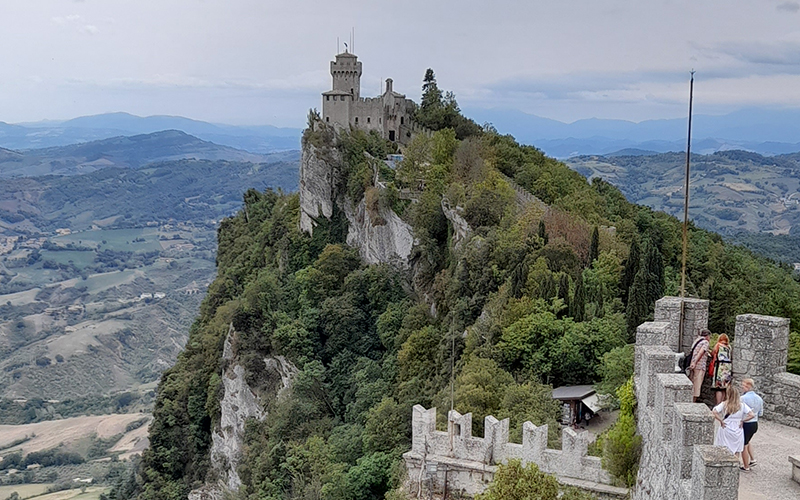
Interesting facts and tips about San Marino:
- It’s the 5th smallest country in the world, with a land area of 24 square miles.
- It’s the oldest republic in the world.
- There are many exciting festivals in San Marino. The Feast of Saint Marinus on September 3rd is a national holiday celebrated with traditional processions, fireworks, and cultural activities.
- Despite being one of the oldest countries in the world, it has remained consistently neutral, including during the Second World War, refusing to even side with Italy. The last battle they actively participated in was in 1463.
- The US President Abraham Lincoln became an honorary citizen of San Marino when he recognised San Marino’s Independence in 1861
- San Marino has an exciting and unique culinary scene, and to protect this the Sammarinese government has banned fast-food chains like McDonalds from the country.
- San Marino is amongst the most financially responsible nations in the world, with no national debt and a record low unemployment rate.
- Being surrounded entirely by Italy makes San Marino not only landlocked but also one of just three enclave countries in the world. The other two are Vatican City (also surrounded entirely by Italy) and Lesotho (surrounded entirely by South Africa).
- You can get your passport stamped with a San Marino stamp, either by asking border force or by asking at the tourism office. You do not need your passport stamped, and this has no legal or immigration significance, but is merely a novelty souvenir to remember your trip by. Usually when entering you won’t even be required to show your passport.
- There is a cable car which can take you from the villages below to the top of the hill, if you’re staying below and don’t fancy the strenuous walk every morning.
- San Marino has many souvenir shops, and I’d recommend picking up some souvenirs as a reminder of your trip to this unique country, perhaps something with its beautiful flag on.
Both these places are relaxing, safe and culturally diverse- which is what makes them such great picks for a holiday around Italy. We encountered no major problems here, however it’s always best to be on your guard. These two locations made an interesting contrast as a start to the holiday; Venice, one of the most famous cities in the world, that even someone who’s never left their home country could picture; and San Marino, a tiny country many people may have not heard of, and one that usually ranks as the least or one of the least visited European countries in an average year, due to its obscurity. However, I found both to be fascinating, beautiful and culturally diverse places that are definitely worth a visit, either as part of a longer holiday or as a trip in its own right; you won’t regret it.
In the next part, I explore the rest of my holiday; Italy’s capital, Rome, and the stunning and historical Amalfi Coast.
Link to part two here: Exploring Italy part two: The Eternal City
Written by Jeremy Hodgson

